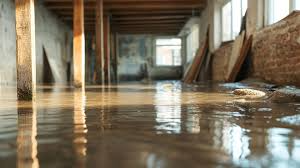Basements offer extra space, comfort, and value to homes and buildings—until water decides to seep in. Basement flooding and dampness are more than just annoyances; they’re disruptive, destructive, and deeply unhealthy if left unchecked. Water infiltration below ground level can destroy furniture, trigger mold growth, and compromise structural stability. More often than not, these issues sneak in quietly, only revealing themselves when the damage has begun. It’s essential to understand the causes of basement moisture, the signs to look out for, and the correct approach to restoring dry, livable conditions.
We will explore the deeper reasons behind recurring dampness, how proper water removal and treatment methods can help, and how a professional response team can make all the difference. From identifying early warning signs to implementing smart solutions, this sheds light on what happens underground and how to take control when nature finds its way beneath your home. With the support of experienced services like Ideal Response of London, property owners can approach these challenges with confidence, knowing that effective and lasting solutions are within reach.
Understanding the Origins of Basement Moisture
Basement dampness doesn’t happen overnight. It is the result of consistent environmental pressure, foundation challenges, and occasionally human neglect. Water seeks the path of least resistance, and since basements sit below ground level, they are natural targets. One of the most common causes of moisture is hydrostatic pressure. After heavy rain, water accumulates in the soil around the foundation. This pressure forces water through cracks in walls, porous concrete, or even through gaps in window wells. If the drainage system around the home isn’t functioning correctly—whether due to clogged gutters, broken downspouts, or poorly sloped landscaping—this water has nowhere to go but inside.
Internal sources can contribute too. Humidifiers, leaking pipes, or improperly vented dryers may release moisture that collects and condenses in the cooler basement air. This combination of internal and external factors creates a perfect storm for moisture buildup, particularly in older buildings where waterproofing was not always a top construction priority. Recognising these causes early is the first step to implementing a meaningful fix that lasts longer than a temporary patch.
Signs It’s More Than Just Damp Air
Many property owners dismiss basement humidity as a natural part of the underground environment. However, certain symptoms indicate that the issue is more severe. A musty odor is often the first noticeable sign. That earthy smell typically indicates the presence of mold spores feeding on moist organic matter, such as wood or drywall. Staining on walls, bubbling paint, and white efflorescence on bricks or concrete also indicate the presence of water. These aren’t just cosmetic issues; they signal deeper infiltration that can weaken materials over time. Soft or swollen woodwork, corroding metal, and sagging insulation are further signs that deterioration is occurring beneath the surface.
In more severe cases, standing water appears after storms, which not only damages the space but also introduces electrical and slip hazards. If left unaddressed, mold and bacteria can flourish, potentially leading to respiratory issues and skin irritation for occupants. Moisture can also attract pests, such as silverfish, termites, or rodents, that seek shelter. The presence of these signs calls for more than a DIY fix. It requires a coordinated approach to both repair and prevention.
Professional Help That Goes Beyond Surface Solutions
Not every water issue can be solved with fans and towels. Sometimes, the situation requires trained technicians with the right tools and the ability to identify the root cause of the issue. That’s where a company like Ideal Response comes in. With decades of hands-on experience handling flood damage, damp, and mold remediation, their approach is comprehensive. The focus isn’t just on temporarily drying out a basement, but on diagnosing the structural and environmental issues that made it vulnerable in the first place. From the moment they assess a flooded site, the goal is to create a plan tailored to that property’s layout, moisture patterns, and risk factors.
Whether it’s deploying cutting-edge equipment or recommending lasting improvements like sump pumps or waterproof coatings, they offer solutions designed to withstand future threats. The value of working with a reliable response team lies in their ability to see beyond the wet floor, to predict what could happen next, and prevent it. Addressing water issues underground isn’t just about restoration; it’s about transformation. And Ideal Response plays a key role in helping clients achieve that transformation from vulnerable to secure.
Basement floods and dampness aren’t just maintenance problems—they’re warnings of deeper issues needing attention. Left unchecked, they can lead to financial loss, health hazards, and repeated repairs. But with a thoughtful response, a clear understanding of the causes, and a commitment to prevention, property owners can turn a vulnerable space into a safe, dry, and usable part of the building. Companies like Ideal Response bring a depth of real-world experience and proven systems that help not only restore but also protect. When a problem goes underground, the response needs to go even deeper—and with the right approach, even the most troubled basements can be brought back to life.


